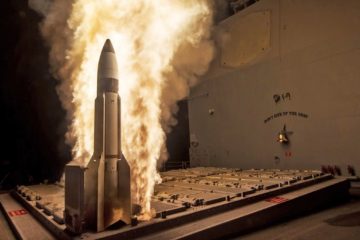HD Hyundai Heavy Industries (HD HHI) recently held a ceremony to mark the completion of the basic design for the KDDX at its Ulsan headquarters. The basic design contract for the KDDX was awarded to HHI by South Korea’s Defense Acquisition Program Administration (DAPA) in 2020, which took 3 years to complete. The KDDX, a cutting-edge naval vessel of the Republic of Korea’s Navy, features indigenous detection and combat systems.
According to HD HHI, its capabilities are on par with the ROK Navy’s most advanced destroyer equipped with the Aegis Combat System, the ‘King Jeong-jo the Great’ (KDX-III Batch-II). Launched in 2022, the ‘King Jeong-jo the Great’ is currently undergoing trials and is expected to be delivered by the end of the year. Marking a significant milestone, the KDDX is the first destroyer built entirely using domestic technology. This encompasses everything from its hull structure to the combat system, including state-of-the-art multi-function radars and a range of armaments. Its construction represents the pinnacle of the Republic of Korea’s naval combat vessel technology.

During MADEX 2023 HHI showcased a mock design of the KDDX stating system integration and technological advancement as the main keywords of the design. As the first warship to utilize a full electric propulsion system powered by two gas turbine generators and three diesel generators, it is equipped with a 25MW extra-large propulsion electric motor. The powerful propulsion system along with an abundant number of generators is to allow the KDDX to sufficiently utilize the surplus energies across the various systems of the ship as well as leave possibilities to accommodate future directed-energy weapon systems such as lasers.
The KDDX is equipped with Hanwha Systems’ integrated mast (I-MAST), which features a “Dual-Band Multi-Function Radar.” This radar system consists of two radars operating simultaneously. The S-band radar is utilized for long-range air defense targets and ballistic missile detection and tracking, while the X-band radar is employed for short-range air defense targets and surface target detection and tracking. With the inclusion of the I-MAST and electric propulsion system, the KDDX aims to achieve reduced RCS (Radar Cross Section) and decreased underwater radiated noise, thereby enhancing its survivability against enemy submarines and radar detection.
In terms of weapon systems, the KDDX will be equipped with a Mk 45 5-inch main gun, two CIWS-II systems, eight anti-ship missiles (potentially the C-Star by LIG NEX 1), as well as KVLS-I and KVLS-II to accommodate the new naval version of the L-SAM (함대공유도탄-II). L-SAM will provide greater air defense and cruise missile interception capabilities to the fleet. For anti-submarine warfare, KDDX incorporated an integrated sonar system composed of Hull-Mounted Sonar (HMS) at the vessel’s bow and Multi-Function Towed Array (MFTA), and a Low-Frequency Projector Array (LFPA) at the rear.
The recent update to the KDDX’s basic design, as reported by Hyundai Heavy Industries (HHI), includes the implementation of a ‘manpower-reduction platform.’ This development responds to the Republic of Korea’s growing concerns over a shortage of military service-age population. To address this, advanced automation technologies have been incorporated. These include automated ammunition handling systems, a smart bridge, and a state-of-the-art navigational assistance system based on autonomous navigation technology.
Furthermore, HD HHI’s efforts to automate parts of the vessel continue, as evidenced by the completion of the concept design for the ROK Navy’s future Offshore Patrol Vessel (OPV) last year which will greatly reduce the number of crews required through AI. Park Yong-Yeol, Senior Managing Director of HD Hyundai Heavy Industries’ Naval & Special Ships Business Division, said, “HD Hyundai Heavy Industries has been dedicatedly working, based on over 50 years of experience in leading the development of naval ships for the Navy and a strong sense of mission to complete the development of Korean-type naval vessels.” He added, “Based on this basic design, the KDDX will become the flagship of the K-ship, writing a new chapter in the history of the Republic of Korea’s naval shipbuilding industry.”
The total cost of the program is estimated at 5.8 billion USD, with plans for the acquisition of six vessels by the Republic of Korea (ROK) Navy by 2036. These vessels are intended to reinforce the Maritime Task Flotilla Seven, which serves as the main fleet of the ROK Navy. This year, the KDDX is scheduled to undergo detailed design, followed by the signing of the lead ship construction contract






